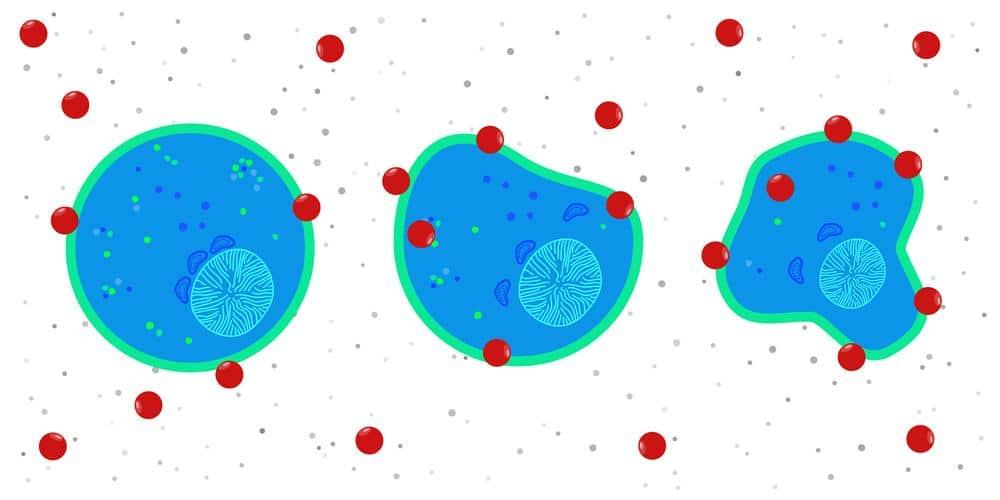Tl;dr - It's pretty easy to drop third-party purchase intent data into your outbound sales model, or to plug it into ABM account prioritization. However, synthesizing a full marketing data stack, including first, second, third-party data, enrichment, technographics and more, is a vastly more challenging project. Creative thinkers, like those Scott Belsky calls "Free Radicals", provide the vision and energy to drive data orchestration success.
Knowledge & Intersections
 IntentData.io is a proud client of Drift. The conversational marketing software itself, the company's ethos of solving for the customer, and founders' broad vision are all contributing reasons for our loyalty.
IntentData.io is a proud client of Drift. The conversational marketing software itself, the company's ethos of solving for the customer, and founders' broad vision are all contributing reasons for our loyalty.
We've learned a lot from them - directly and indirectly. Back in the day when we all used to go to offices, it was fun to visit Drift's to see which titles were in their book library. And on occasion, to grab one.
That's how I came across a book which I had never read but will likely be familiar to many - Scott Belsky's The Messy Middle (one of five books that Drift's CEO David Cancel [@DCancel] recommended his team read this year.)
Having finally worked my way through the pending reading pile to this book, I have to say that I'm pleased that I grabbed a copy and took DCancel's recommendationl. I'm particularly excited to have stumbled across his concept of "Free Radicals." (more here in his "manifesto" from Adobe's 99U)
Drawing on chemistry, Belsky writes that "the term 'free radical' is used to describe molecules with unpaired electrons, those that may have a positive, negative, or zero charge. They are hard to pin down, and as a result their possibilities are endless. They can prove wildly destructive or instrumental, depending on context." He goes on to describe the personality and work habits and aspirations or a prototypical free radical today.
Reading it, I've realized it's a great way to describe what's missing from most intent data orchestration projects.
Qualitative Attributes Unlock Quantitative Potential
Whether you subscribe to Dweck's Fixed vs. Growth Mindset, Hermann's Whole Mind, Marston's DISC, Gallup's StrengthFinder or any of the myriad of other tools, it's clear we approach situations in ways that are influenced by our outlook and personality.
This is acutely apparent in data operations.
Linear thinkers tend to look for opportunities to plug a single data source into a specific demand generation process step. They may well draw on a data stack by integrating various sources, each at a specific point in the process. They generally dismiss integrating sources or using data beyond demand generation. It's messy and chaotic.
Non-linear thinkers are more willing to implement creative data combinations according to detailed maps from which they can work.
And the rare "free radical" visualizes the entire intent data stack as a collection of insights that can be applied in multiple combinations at multiple points in the customer lifecycle. It's often an iterative process that bumps up against the limitations of seemingly robust MarTech and Sales Tech stacks. The intent data orchestration outcomes are a product of their vision and synthesis. The revenue outcomes rely not just on the brilliance of their models (e.g. propensity to buy) and other complex concepts, but also heavily on enablement to help sales and success leverage the insights effectively at scale.
What do 'Free Radicals' Visualize and Synthesize that Others Don't?
It starts with their ability to view the full intent data stack (1st party known, 1st party anonymous, 2nd party, 3rd party account-level, 3rd party contact level™ intent, technographic and enrichment data) simultaneously in aggregate, and as the sum of constituent parts each with various specific limitations and capabilities.
As a result they understand the need to unify the data and to segment it based on account fit (ICP - ideal customer profile) and activity and contact fit (persona) and activity. They recognize that the fully synthesized data requires more than a simple CRM integration, but rather the manipulation and view from multiple angles.
And then they start to experiment - testing iterative hypothesis for what combinations of contemporaneous intent signals are significant, and how to manage the activation at scale. They see it much like a kaleidoscope image slowly organizing itself into a beautiful and rational order.
Intent Data Value - With and Without a 'Free Radical'
Can you use intent for a single use case in a stand-alone model? For sure.
It can provide helpful information for account-based marketing prioritization or demand gen.
But seeing 1st, 2nd and 3rd party data separately, and in the abstract, doesn't unlock the full value.
Putting the project in the hands of your own free radical can turn a data tool into a powerful competitive advantage.
If you know a 'Free Radical' that has done amazing stuff with a full intent data stack, then jump over here and nominate them for our Marketing Data Master Distiller Award that's designed to recognize that kind of bold and creative excellence in data operations.
image via TopRepBoston




